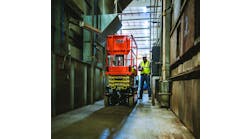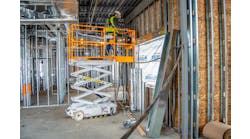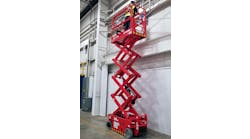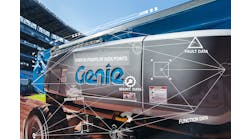In its July issue, RER examines how manufacturers and rental companies are dealing with burgeoning costs of fuel and materials, and how this, along with an economic slowdown, affects relationships between manufacturers and rental companies. RER conducted a number of interesting interviews with manufacturers, rental company owners and lenders examining these issues from various perspectives and will run a series of these interviews in RER Reports. This week RER editor Michael Roth interviews Dave Christifulli, former senior executive with Wacker Corp. and now president of Christifulli Consulting Group.
RER: Manufacturers have been hit with major costs increases — steel, tires, components, copper, every other item used in manufacturing. How much have costs jumped and what kind of effect has this had on manufacturers?
Christifulli: Cost increases have had enormous effects on manufacturers. Steel, aluminum, iron castings, copper — pricing over this period has increased in the double-digit range. This is not necessarily the result of supply/demand, but by the weakened dollar, since a large amount of these items coming into the United States were lower-priced imported commodities and raw goods.
Various news agencies have reported increases of up to 60 percent over the past 18 months. For most manufacturers, they haven’t been that high, but they’ve still experienced double-digit increases. Labor wage increases have been in the range of 3 to 3.5 percent each year over the past five years. Oil-based products such as resins, plastics, rubber and lubricants have seen double-digit increases.
How have the costs of fuel affected business?
There are three areas that account for the rising cost of fuel. Inbound freight for raw materials (fuel surcharges). Energy costs for heat and electricity, everyone has seen double-digit cost increases in these areas over the past 18 months. And third, outbound freight to the customer. Recently on a news program on TV, the CEO of the nation’s largest freight company said that the fuel cost surcharge that they are charging their customers has been 32 percent just in the past 12 months.
How seriously have the costs of fuel, copper, and steel affected margins?
Taking into consideration the costs increases for labor, raw materials and operating costs, the effect without any actions by the manufacturer would be at least in the range of 800 to 1,500 basis points of margin. It doesn’t take a CPA to figure out that with pre-tax operating margins of 4 percent to 10 percent, one couldn’t survive without at least a substantial price increase, even with a strengthening dollar. Well-managed companies are tackling the problem in many ways, some of which are basic and some of which are creative.
What are a few of them?
First, business process re-engineering, one of the competencies of my consulting group. Basically, that means looking at all of a company’s business processes, and eliminating those that truly don’t bring value to the customer. This includes both internal and external customers.
Second, partnering with key suppliers with the objective of reducing costs associated with inventory carrying costs by paying on a “pay as consumed” basis or delivering on just-in-time basis or vendor-managed inventory.
Third, companies are restructuring their work hours to assist employees in cutting their fuel costs. Some of the ideas are to change from eight hours, five days a week to 10 hours in four days as long as they don’t cut or reduce customer service. This includes measures such as car-pooling coordinating assistance.
Some companies aren’t making good decisions, such as cutting their field sales force without considering the mid- and long-term effects, reducing or cutting customer service levels without a value analysis. Not taking the time to review their internal processes with the objective of accessing how the changing business climate can eliminate newly identified non-essential functions.
Can you give me an example of that?
I was amazed on one of my annual visits to a large rental company a few years ago when I learned that it cost them approximately $150 to process an order to a manufacturer. That’s for each and every order process within their organization. Can you imagine placing an order for a $25 part and the company’s cost of transaction is $175?
This is where the opportunity lies for rental companies to cut their costs far beyond any of the price increases the manufacturers are passing on to them. As a matter of fact, many manufacturers have spent hundreds of thousands of dollars installing systems to substantially reduce their customers’ processing costs. SmartEquip is one of these systems. For example, if a large rental company is processing 3,000 transactions a month with a manufacturer, they annually purchase $25 million in whole goods and parts (not uncommon) and reduce their order transactional cost from $150 to a realistic $25, this would amount to an annual cost savings of $4.5 million. It would take an unlikely 18-percent price increase to erase these cost savings.
How have all these costs issues affected the sales of manufacturers to rental companies?
I can only answer that question from the perspective of Christifulli Consulting Group, but basically all manufacturers are in the same boat. Rental companies will always push for lower prices; that’s what they are trained to do. I really don’t know why the larger rental companies haven’t made serious gestures to their key suppliers with the goal of jointly working together at reducing their transaction costs, since everyone knows that the margin give by the manufacturers is all but gone.
Sure, rental companies could go for Tier-2, 3 or 4 suppliers, but this would only be a very short-term and costly solution, since these manufacturers lack the product support required by rental companies. This is especially true now that the rental companies have cut back in their field sales and service support. They are also aging their rental fleets. This now is requiring the manufacturers to increase their field sales and service support, assuring that their rental customer rental fleets are maintained to give them the uptime needed to increase time utilization and profitability. This is something Tier-3 and 4 suppliers cannot do.
Will there be some issues of contentions between manufacturers and rental companies because of these pressures?
The price increases that the manufacturers have and or will have to pass on to the rental channel, I venture to say these will be in the range of 4 percent to 10 percent in 2008 and 2009.
Also, with the near-term uncertainty of oil and commodity prices, coupled with the inflationary effect, it will be hard for any manufacturer to give the necessary price increase notice term period to the large rental companies without hardship. This will create some conflict between the manufacturer and the rental channel, but can and should be worked out through a better manufacturer/rental channel relationship not adversarial in nature, but truly a partnership based on a cooperative and communicative basis. Some say this can’t be done, but I feel it has and can be done and with very positive results for both parties.
My basis for this position is simple: look at some of the largest retailers. Where would they be if they didn’t carry leading brands? Why do companies like Wal-Mart, Kohl’s, Penny’s, etc., carry more expensive name brands? Because these leading-brand companies have spent billions in building brand-name awareness and preference through trust to the consumer. Trust that’s built on brand quality, reliability and best overall value. Simply, if they didn’t carry these brands, their customers would shop elsewhere.
One only has to look to the U.S. auto companies that have skimped in these areas, such as GM and Ford. They have consistently looked to only cutting costs, not looking to their customer needs or identifying changes in market trends, only to lose market share to their foreign competitors over quality and performance issues.
In past slowdowns, manufacturers would do their best to enhance terms and financing opportunities to inspire rental companies hesitant to spend money on equipment. Does it seem more difficult to come by these terms in the current environment?
There is money available to financially sound manufacturers, but usually at a cost that is higher than the rental channel can obtain through their own means. Low-cost financing comes at a cost, either in reduced discount or in services. A manufacturer can buy down low-cost finance programs, but this reduces their margins and ultimately affects the product quality, support or even their existence. There are no free lunches in this world and no one should be naïve enough to believe there is.
Many manufacturers have increased capacity in recent years. What impact will slower sales to rental have on them?
Reduced volume, and this is the case for most U.S. sales, results in increased factory burden costs and therefore higher manufacturing costs. But the manufacturer with a global viewpoint over the years minimizes this effect. This somewhat reduces the cost increase effect by keeping volumes up through exports. Also new product development can fill some of the manufacturing capacity gaps. I don’t think this will offset all of the costs increases, but will keep these manufacturers more competitive and through the new product development process more valuable to their channel partners.
Any advice?
Bottom line: Manufacturers, look for ways to reduce your channel partners’ back-office processing costs. Design safer, more reliable and better-performing products. Rental companies: don’t look short term, but incorporate mid- and long-term thinking in your product evaluation process. Look to manufacturers that can fill the gaps created during tough economies with the thought in mind of incorporating them to cut operating costs permanently. Manufacturers and rental channels: find ways to truly develop a partnership based on trust, cooperation and open communication and then commit to it! It can only result in optimum financial performance for all.





